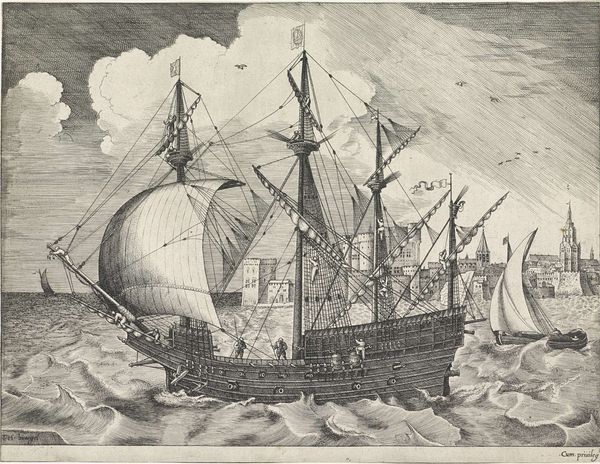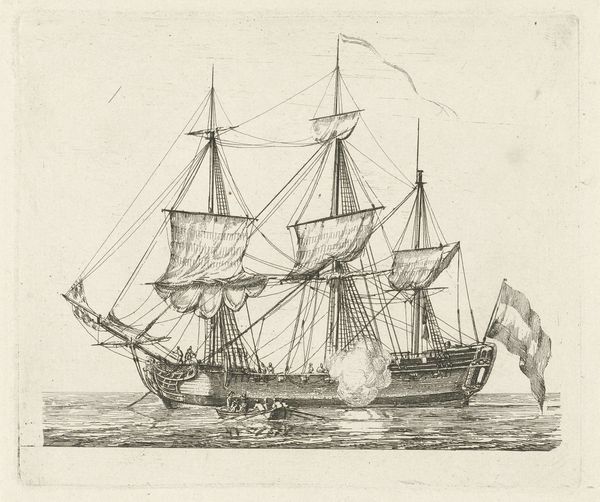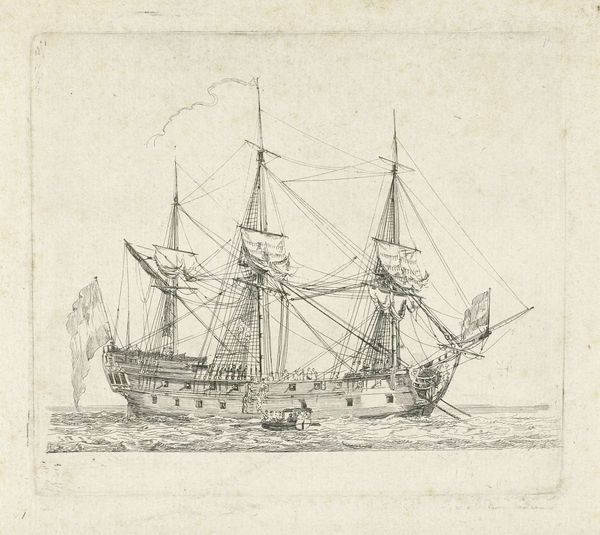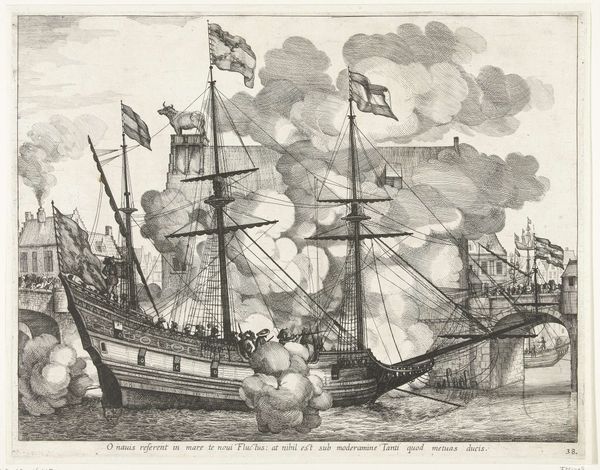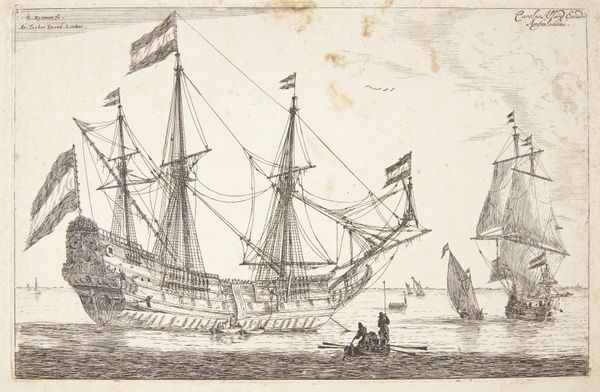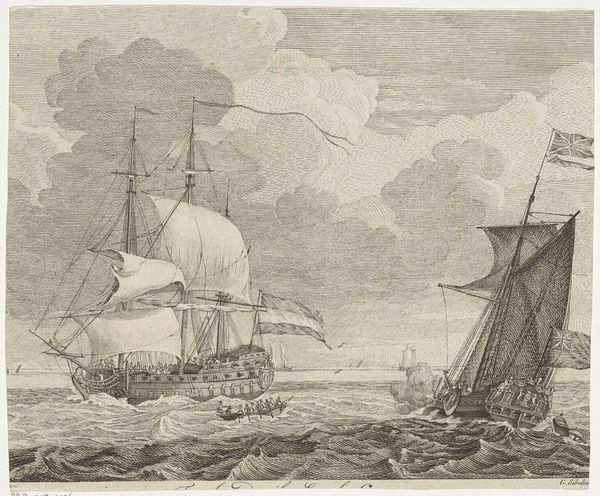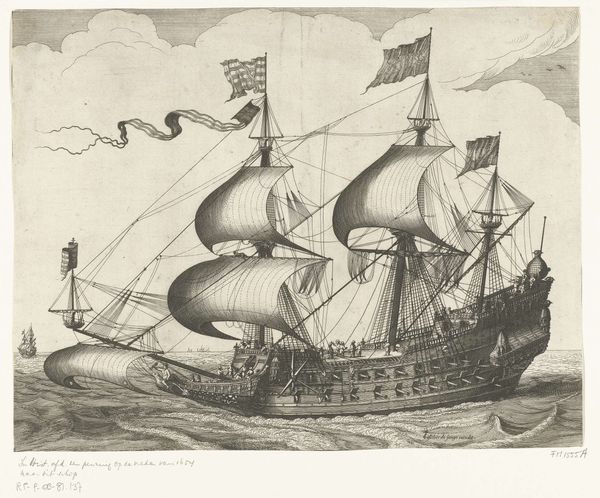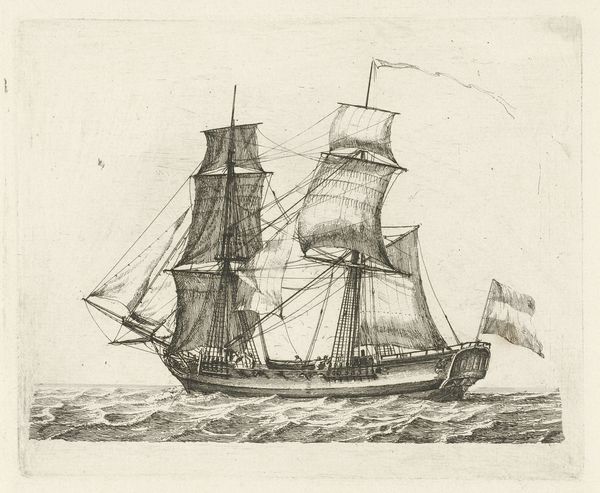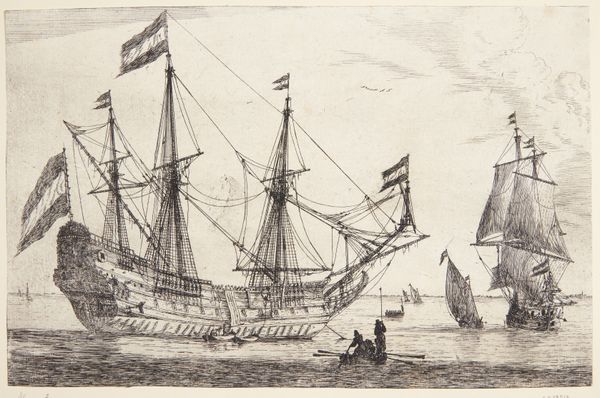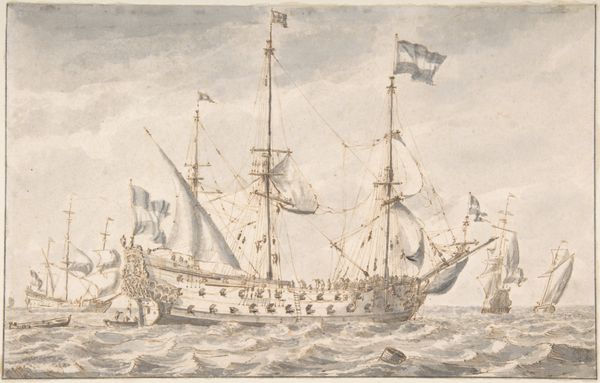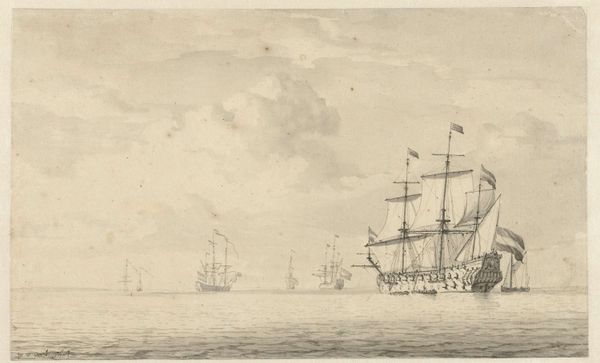
print, engraving
# print
#
landscape
#
line
#
cityscape
#
northern-renaissance
#
engraving
#
realism
Dimensions: height 230 mm, width 290 mm
Copyright: Rijks Museum: Open Domain
Curator: Here we have Frans Huys’s “Driemaster voor anker bij een stad," created sometime between 1561 and 1565. Editor: The detail is astonishing; it feels like peering into a tiny, busy world frozen in time, especially given the scale. Curator: Precisely. The print, using the line technique through engraving, manages to give us an incredible amount of information in a single scene. Notice how Huys provides details on everything, from the rigging to the bricks of the architecture. It provides clues about the society, commerce, and perhaps even anxieties of the time. Editor: Absolutely, all those ropes, masts, and layered structures! And those tiny people on the ship... what must it have been like to navigate using only wood and wind? You feel how deeply dependent those societies were on their raw materials. Labor and time must've been intense just for regular trips across seas. I imagine each piece being hewn from oak, with specialists knowing their task minutely. Curator: Indeed. I find myself wondering what this port city must have been like. Is it a generalized representation, or perhaps based on an actual location in the Netherlands, or even Italy? I can almost feel the salty air and hear the cries of gulls in the distance, which somehow ties us, even today, to a sense of historical moment. Editor: But that’s exactly where the brilliance lies—the sense of immediacy it gives, with a tension between nature, like wind and water, with these hulking objects dominating them. Looking closer, one wonders about the production chains—the mining of metals for anchors and cannon, the cutting of trees and their transport for masts and decking. I guess art reminds me that “history” comes about through objects! Curator: You bring forth an excellent point—art as material evidence. Looking at the print, the textures of the wood, stone, fabric almost jump out at me. Huys, like other Northern Renaissance artists, captures a sense of everyday life...of material engagement in a rapidly changing world. Editor: Yes! But seeing these detailed images now can transform us into forensic examiners of those bygone eras; we become attuned to process, production, and the very textures that defined experience for workers. The physical realities become primary, reshaping perceptions around wealth, risk, and the real consequences of empire. Curator: Well, perhaps by engaging with both history and material, we can appreciate this work not just as a beautiful engraving but also as a point of connection. Editor: Agreed. This little window allows us glimpses beyond mere representation – the reality of making something that helps the age, whatever their motives.
Comments
No comments
Be the first to comment and join the conversation on the ultimate creative platform.
